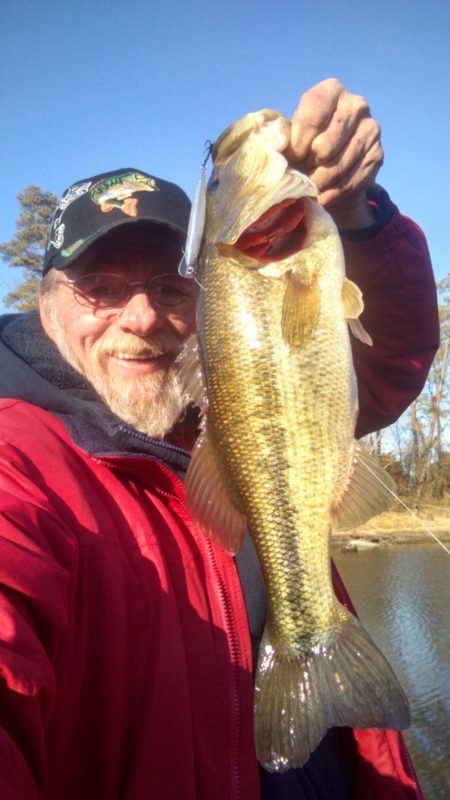The Feeding Frenzy Begins
The Jerkbait
By Bruce Callis
[print_link]
Spring time is right around the corner, but with the warmer weather and rising water temperatures, the bass are starting to think about spawning. Granted, it is still a little ways away, but the feed bag light has been lit, and they are starting to feed heavily. Now is the time when true hawgs can be caught. The lakes are already starting to give up big bass who look like they are ready to explode.
This is also a time when a jerkbait can really shine. But it still requires a lot of work. It isn’t just throw it out and they automatically slam your bait. When we first pick up a jerkbait, it can seem so intimating. That long slender body with 3 sets of treble hooks, or the shorter 2 treble hook bait, fatter body or skinny, suspending or floating, deep diving or shallow running, what do we choose. And exactly how do we fish it. I remember when I first got mine, I had no idea what I was doing.Back those 40 some years ago, we didn’t have the choices we have today and I picked up a floating jerkbait. And I basically threw it out and reeled it back in. I caught a couple bass, but I was frustrated to say the least. It took me many years to really learn how to finally fish the bait more efficiently. But today we have so many options to learn the different ways the bait can be used.
This time of year, a suspending jerkbait can be deadly. But you must know where it really shines. It can be fished on either a spinning rod or a baitcasting rod, but with either, the rod must have a good backbone, but a fast tip. You want to work the bait, but not rip the lure out of the bass’ mouth. Fluorocarbon line is the best to use, but monofilament will work also, with 10-12 pound test being the best choice in line strength. Once you are set, make a long cast and reel the bait down with 2 or 3 turns of the handle. On a slack line, you start to twitch the lure, making it dance and dart, like a baitfish struggling. The object is to make the lure dance in place more than moving toward you in big jumps.
Fishing a jerkbait is all about a rhythm or cadence, and usually you start with 2 sharp jerks, then a pause, and then you repeat it over and over back to the boat or shore. But there is no magic formula or how many jerks, how fast you jerk, or the length of the pause. In the winter, the pause may be painfully long, or it can be a quick pause, just enough to make the bass react and strike your lure. You will need to experiment to find what the bass want, and it can change from day to day, and it can even change during the day. You have to change to keep up with the bass.
Jerkbaits really excel in slightly stained water. While they will work in clearer water, wind is a big plus. And bright sunny day with slightly stained water and a little wind are the most optimal conditions during the spring and prespawn. The clearer the water, the more natural colors work better. And the more stained the water, the more you need to go with brighter colors and the darker colors.
The jerkbait is designed to draw fish out of cover to attack your bait. Work it along the breaks, along the points and around laydowns and docks. Pay attention to where you are getting bit and how you are working the bait itself. If they are hitting it on the shady side of docks, you can target those areas especially. If they are hitting along secondary points, you can work down the bank hitting those areas. If they are hitting in the back of pockets, you can run and work just those locations.
Jerkbaits can really be amazing baits this time of year, but you must be patient and pay attention to the details of every catch. If you catch 2 or 3 fish doing the same thing, you have a pattern that should work anywhere on the lake, just be ready to adjust to the changing conditions and the bass. And have fun!


